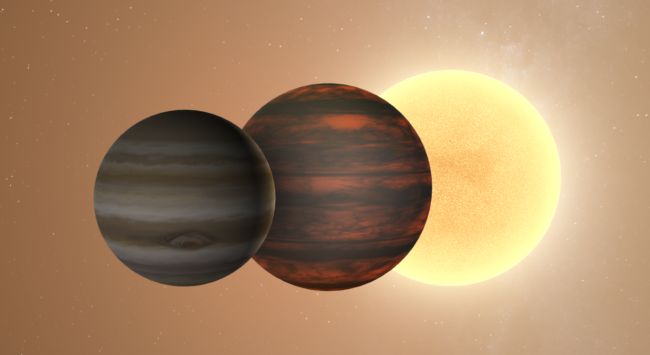

For example, when adding a planet in the red zone of the habitable zone around a star, most of the time, the planet is frozen. The habitable zones of any stars, including random main sequence stars, random known stars and custom made stars, do not properly respond to temperatures. Once you have the planet where you want it, you can begin the process of terraforming it.There is also another terrible bug which is also critical in Universe Sandbox 2. To get it further back, perhaps you could use the same mechanism you used to get it inwards: using the gravity of another body to change its orbit, a bit like planetary migration, although stability will, of course, be an issue. It is too close to the star to be inside its habitable zone, and it's way to hot. You still have a problem: The chthonian planet is still not a great place for life. Both options would be incredibly hard, but still within the realm of possibility.

Or maybe you could build a large object resembling a Dyson sphere in size, and use that to attract it inwards. Perhaps you could attract it with another body - perturbing it just enough to make it begin to move inwards. To move it inward, you would have to induce an artificial migration. Jupiter would have to have its orbit reduced to a very tiny size for this to be possible. The problem is that the planet has to already be very close to the star. So a star can convert a gas giant to a terrestrial planet for you. If you could introduce an atmosphere and other materials, you could begin to terraform one. These hypothetical objects would be similar to terrestrial planets in size. If the process goes on long enough, the atmosphere can be entirely blown into space the resulting body is known as a chthonian planet. These winds can, if they are strong enough, rip away the planet's atmosphere via hydrodynamic escape. Hot Jupiters often experience strong stellar winds. They most likely form farther out from the star - beyond the frost line - and come inwards, towards the star. Hot Jupiters are - well, hot because they are so close to the star, and so they suffer from other stellar effects. Hot Jupiters are large gas giants orbiting close to their home stars (0.015 AU and 0.5 AU, as opposed to Jupiter's average orbital radius of about 5 AU). Fortunately, stars can do it for you - if you're willing to move the planet in question. That would be pretty hard for a civilization to get rid of. Jupiter's atmosphere is about 5,000 km high, and comprises the majority of the planet's mass.

It is theoretically possible, but I don't know how you could rip off the atmosphere and mantle. This is really sort of cheating, but it could actually work, so here it goes. The thruster needed to move the planet to the habitable zone could operate by ejecting the atmosphere, solving two problems at once. planet passes too close to large object), or such an event that was artificially induced by some thruster. It could have been lost by a catastrophic event (e.g. Your civilization would have to be very advanced to find enough energy to remove the atmosphere, and to supply the oxygen which is not present in it. Neptune is similar, with a core of 1.2 Earth masses. The atmosphere itself has 0.5 Earth masses. Uranus is thought to have a hot (5000K) rocky core of 0.55 Earth masses, a "mantle" of "hot" liquid or supercritical water and ammonia, of 13.4 Earth masses, possibly with lots of diamonds forming near the bottom due to high pressure and presence of carbon (from methane).

Ice giants have 20% hydrogen, and are mostly other things such as methane, ammonia and water. These can't really be terraformed, and are also bigger than ice giants. Gas giants such as Jupiter or Saturn, composed of 90% hydrogen, do have a solid core, but it consists of metallic hydrogen, which can only exist at extremely high pressures - if the atmosphere was lost, the core and the liquified gases surrounding it would evaporate. For this, the gas giant would have to have a lot of oxygen, which not many seem to do. The central and densest part of the ring is inhabited, but there is no gravity. This is a ring of gas in orbit around a neutron star, formed by a gas giant which went too close to the star and lost its atmosphere. Larry Niven's book The Integral Trees is set in the "Smoke Ring". For "ice giants" like Uranus or Neptune, yes.


 0 kommentar(er)
0 kommentar(er)
